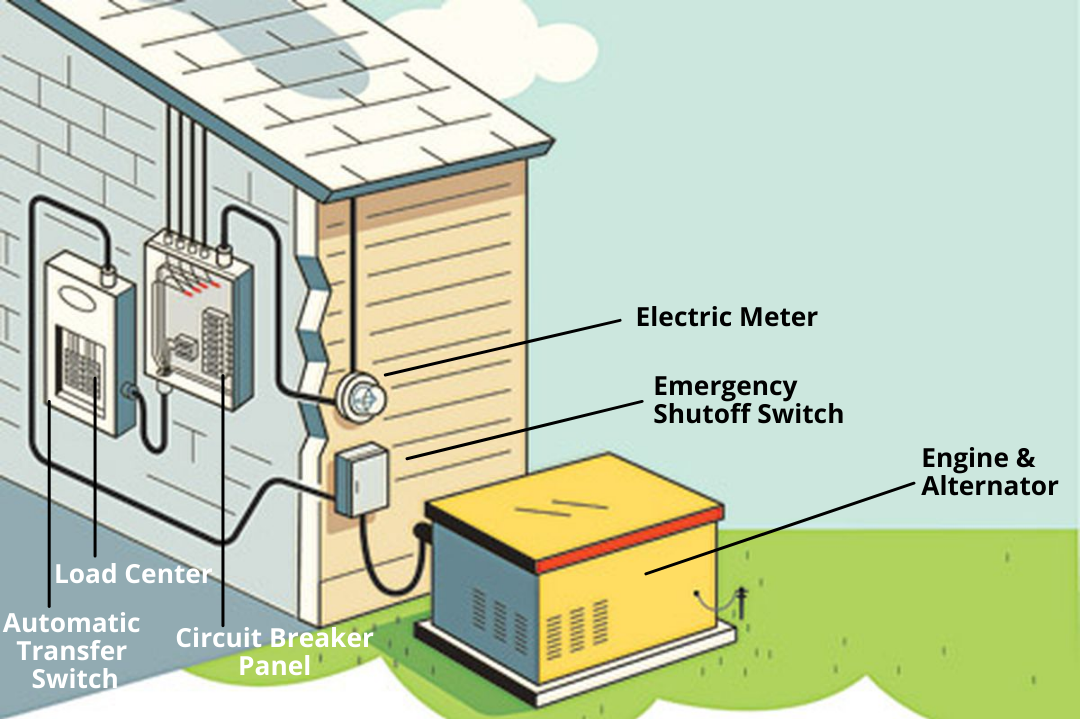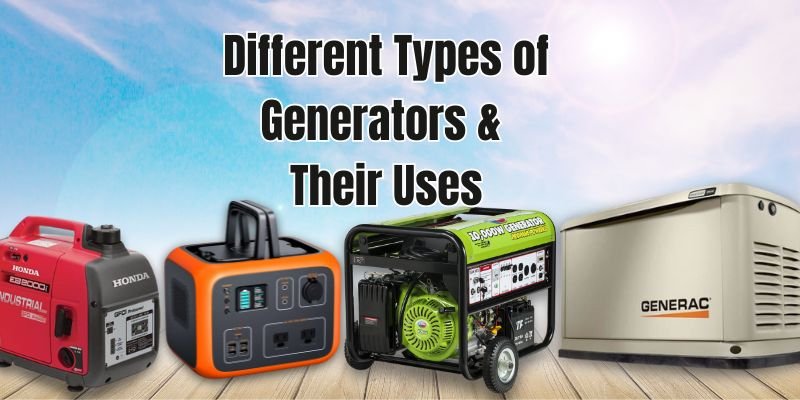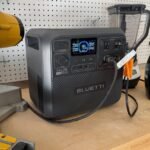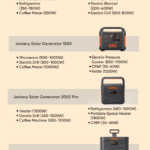Disclosure: This post contains affiliate links and I will be compensated if you make a purchase after clicking through my links. Learn More
A Generac generator produces power when needed. It provides electricity during outages.
Generac generators are popular for their reliability and efficiency. They are designed to automatically detect a power outage and start up within seconds, ensuring your home or business remains powered. Understanding how a Generac generator works can help you appreciate its benefits and make informed decisions about purchasing and maintaining one.
In this post, we will explore the inner workings of a Generac generator. You will learn about the key components and how they interact to provide seamless power. This knowledge will help you feel more confident about using and maintaining your generator. Let’s dive in and discover the mechanics behind these powerful machines.
Introduction To Generac Generators
Generac generators are a popular choice for backup power. They ensure your home or business stays powered during outages. But how do these generators work? Let’s explore their features and history.
Importance Of Backup Power
Power outages can disrupt daily life. They can cause loss of data, spoilage of food, and halt essential services. Backup power from Generac generators can prevent these issues. They provide a reliable source of electricity when the main grid fails. This ensures comfort and safety.
History Of Generac
Generac was founded in 1959. The company focused on designing and manufacturing affordable generators. Over the years, Generac has grown to become a leading name in the industry. Their generators are known for their reliability and durability. They continue to innovate and improve their products to meet the needs of their customers.

Credit: www.ecicomfort.com
Key Components
Generac generators work by converting fuel into electrical power. Key components include the engine, alternator, and fuel system. These parts work together to ensure a stable power supply during outages.
Understanding the key components of a Generac generator can help you appreciate how it ensures uninterrupted power supply during an outage. Let’s break down the essential parts that make this possible.
Engine
The engine is the heart of the generator. It burns fuel to create mechanical energy. This energy is then converted into electrical energy.
Most Generac generators use natural gas or propane. This makes them reliable and efficient.
Think about your car’s engine. The generator engine works similarly but focuses on creating power for your home.
Alternator
The alternator is crucial in converting mechanical energy into electrical energy. It works hand-in-hand with the engine.
Inside the alternator are coils and magnets. When the engine runs, it spins these components to create electricity.
Imagine turning a bike pedal to light a bulb. The alternator does this on a much larger scale for your entire house.
When considering a generator, do you think about these parts? They are vital for keeping your lights on during a storm.
Fuel Types
Generac generators use various fuel types, such as natural gas, propane, and diesel. These fuels power the engine, creating electricity for homes and businesses during outages.
When considering a Generac generator for your home or business, understanding the different fuel types can help you make a better decision. Different fuel types have unique advantages and considerations. Let’s dive into the two primary options: natural gas and propane.
Natural Gas
Natural gas is one of the most popular fuel choices for Generac generators. It offers a steady supply, which means you don’t need to worry about running out during a storm.
Using natural gas is convenient. If your home is already connected to a natural gas line, you don’t need to store fuel. This reduces the risk of fuel-related hazards.
Natural gas burns cleanly. It’s an environmentally friendly option, producing fewer emissions compared to other fossil fuels. However, you should consider the availability of natural gas in your area before making a decision.
Propane
Propane is another excellent fuel option for Generac generators. It is known for its long shelf life. This means you can store it for extended periods without degradation.
Propane is versatile. It can be stored in large tanks, making it suitable for areas without a natural gas supply. This can be a lifesaver during extended outages.
Propane burns cleanly as well. It provides a reliable source of power with minimal environmental impact. However, consider the logistics of storing and refilling propane tanks.
Choosing the right fuel type for your Generac generator depends on your specific needs and circumstances. Think about availability, storage, and environmental impact. What works best for you?
Starting Mechanism
A Generac generator is a reliable source of backup power. Understanding its starting mechanism is crucial. Let’s explore how it works and keeps your home running smoothly.
Automatic Transfer Switch
The automatic transfer switch (ATS) plays a key role. It detects a power outage quickly. When this happens, the ATS signals the generator to start. This process is seamless. Within seconds, your generator is up and running. Your home gets power without you lifting a finger. The ATS ensures a smooth transition from the grid to the generator.
Once the grid power returns, the ATS switches back. The generator turns off automatically. This system protects your appliances and ensures safety. The ATS is a vital component for automatic operation.
Manual Start
Some Generac generators offer a manual start option. This feature is useful if you need direct control. To start the generator manually, follow simple steps. First, locate the control panel. Next, switch the generator to “manual” mode. Press the start button or turn the key. The generator will start supplying power.
Manual start is useful during maintenance. You can test the generator without a power outage. It provides flexibility and assurance. You have control whenever needed. Both starting methods ensure your home stays powered. A Generac generator is a valuable investment.
Power Distribution
Understanding how a Generac generator distributes power is crucial. This process ensures your home stays powered during an outage. Let’s break down the key components involved in power distribution.
Control Panel
The control panel is the brain of the generator. It manages the entire operation. You can start and stop the generator from here. It also displays important information. For example, voltage levels and running hours. The control panel can alert you to any issues. This helps in maintaining the generator’s efficiency.
Circuit Breakers
Circuit breakers play a vital role in power distribution. They protect your home and the generator. Circuit breakers automatically shut off power if there’s a problem. This prevents electrical overloads and potential damage. Each circuit breaker controls different parts of your home. This ensures that power is distributed evenly and safely.

Credit: donselectric.us
Safety Features
When you own a Generac generator, you want to ensure it operates safely. Generac generators come with various safety features that protect you, your family, and your home. Understanding these features can give you peace of mind during a power outage.
Overload Protection
One of the essential safety features is overload protection. This feature prevents the generator from being damaged by excessive loads. If you plug in more devices than the generator can handle, it will automatically shut down. This prevents overheating and potential fire hazards.
I remember when a friend of mine experienced an unexpected power surge at his home. Luckily, his Generac generator’s overload protection kicked in. It shut down the generator before any damage could occur. This feature can save you from costly repairs and ensure your generator lasts longer.
Carbon Monoxide Detection
Carbon monoxide (CO) is a silent killer. Generac generators are equipped with CO detection sensors to keep you safe. These sensors monitor CO levels and will shut down the generator if they become dangerously high.
This feature is particularly important if you use your generator in a garage or near your home. Imagine how critical this could be during a storm when ventilation options are limited. By having CO detection, you reduce the risk of CO poisoning, ensuring your family’s safety.
Have you ever thought about how a small feature can have such a big impact? These safety features are designed to protect you and your investment. The more you know about them, the better prepared you will be. What other safety features do you think are essential for a generator? Your thoughts could help others make informed decisions.
Maintenance Tips
Maintaining your Generac generator is essential to ensure it runs smoothly and efficiently during power outages. Regular maintenance can help extend the life of your generator and prevent unexpected failures. Here are some practical tips to keep your Generac generator in top shape.
Regular Inspections
Inspect your generator regularly. Look for any signs of wear and tear or potential issues. Check the battery connections and ensure they are tight and free of corrosion.
Make sure the coolant and oil levels are adequate. If you notice any leaks, address them immediately. Regular inspections can help you catch problems early before they turn into costly repairs.
For instance, I once noticed a small oil leak during a routine inspection. Fixing it promptly saved me from a major repair and kept my generator running smoothly.
Oil And Filter Changes
Changing the oil and filters is crucial. It keeps your generator running efficiently. Follow the manufacturer’s recommendations for oil change intervals.
Typically, you should change the oil after every 100 hours of use. If you use your generator frequently, you might need to do it more often. Always use the oil type recommended by Generac for optimal performance.
Don’t forget the air filter. A clogged filter can reduce efficiency and increase wear on the engine. Check and replace the air filter regularly, especially if you operate the generator in dusty conditions.
How often do you check your generator’s oil and filters? Regular maintenance can save you a lot of trouble in the long run.

Credit: www.youtube.com
Common Issues And Solutions
When you rely on a Generac generator for power, understanding common issues and their solutions can save you a lot of headaches. Sometimes, even the most reliable generators face hiccups. Let’s dive into some frequent problems and how to fix them.
Startup Problems
One of the most frustrating issues is when your generator won’t start. This can be due to a dead battery. Ensure the battery is fully charged and connections are clean and tight.
Another culprit could be the spark plug. Check if it’s dirty or worn out. Cleaning or replacing the spark plug often resolves the issue.
If the generator still won’t start, inspect the air filter. A clogged air filter restricts airflow and affects performance. Cleaning or replacing it can help get your generator running smoothly.
Fuel Supply Issues
Fuel supply problems are another common headache. Low fuel levels are an obvious but often overlooked issue. Always check the fuel gauge and refill as necessary.
Sometimes, old or contaminated fuel can cause problems. If the fuel has been sitting for a while, drain it and add fresh fuel. Using a fuel stabilizer can also help prevent this issue.
Another potential problem is a clogged fuel line. Dirt and debris can block the line, preventing fuel from reaching the engine. Cleaning or replacing the fuel line can solve this problem.
Have you faced any of these issues with your Generac generator? What solutions worked best for you? Share your experiences in the comments below!
Frequently Asked Questions
How Does A Generac Generator Start Without Electricity?
A Generac generator starts without electricity using an automatic transfer switch. It detects power loss and activates the generator.
What Is The Most Common Problem With Generac Generators?
The most common problem with Generac generators is battery failure. Regular maintenance helps prevent this issue.
How Long Can You Run A Generac Generator Continuously?
A Generac generator can run continuously for 24 to 48 hours, depending on fuel supply and model specifications. Regular maintenance is essential.
How Is A Generac Generator Powered?
A Generac generator is powered by natural gas, propane, or diesel. It connects to your home’s existing fuel supply. The generator automatically starts when it detects a power outage, ensuring continuous electricity.
Final Words
Understanding how a Generac generator works is crucial. It provides reliable power during outages. The generator uses an internal engine to create electricity. This keeps your home running smoothly. Regular maintenance ensures its optimal performance. Generac generators are user-friendly and efficient.
They offer peace of mind during emergencies. Choosing the right model depends on your needs. Always consult a professional for installation. Proper care extends the generator’s life. Investing in a Generac generator is a smart choice. It keeps your home powered and safe.








